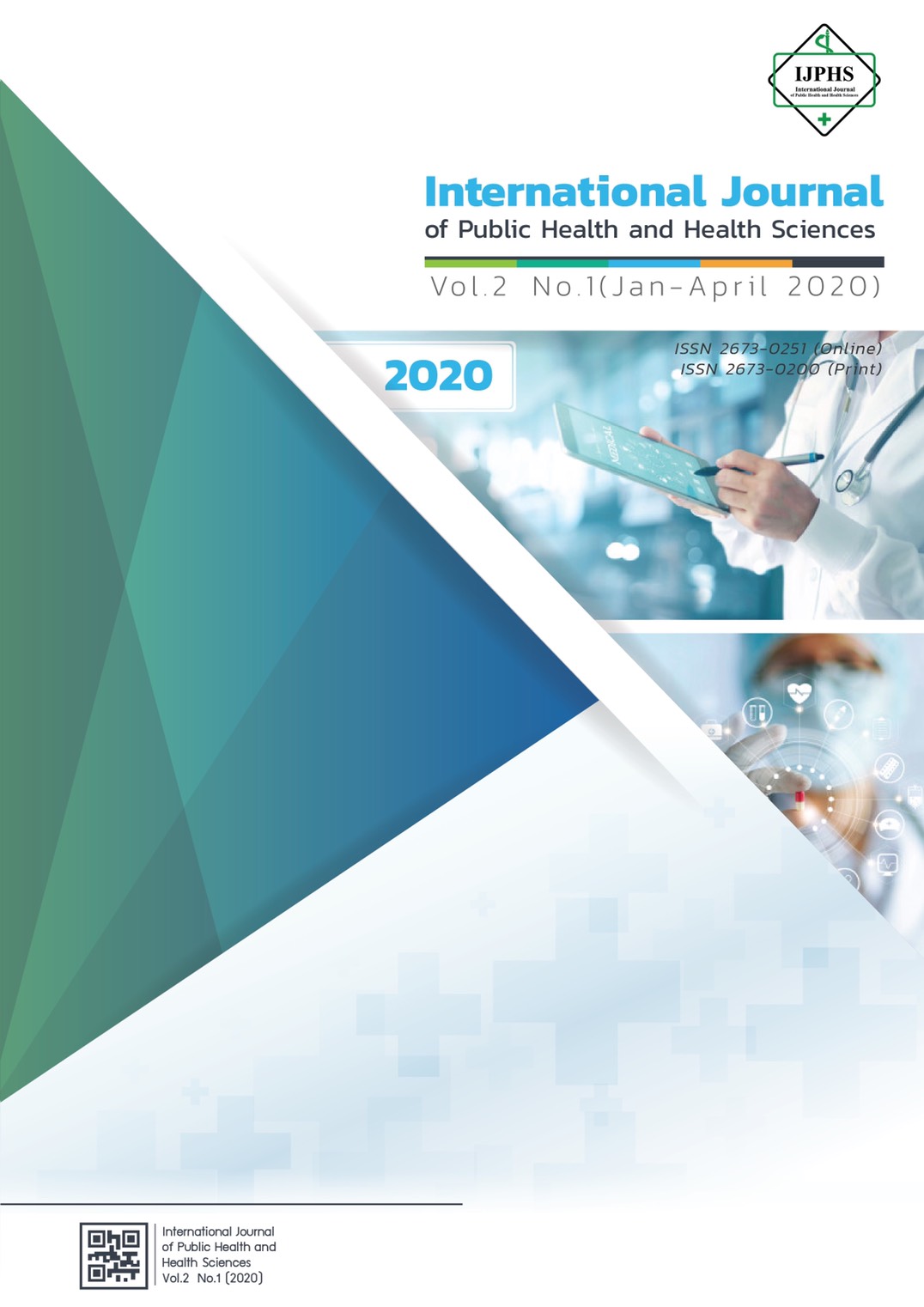The Relationships between Palliative Care and Quality of Life among Breast Cancer Patients at Adam Malik Central Hospital in Medan, Indonesia
Keywords:
Breast Cancer, Quality of Life, Palliative CareAbstract
Breast cancer is one of the most common cancers in women wotdlwide. The occurrence of breast cancer is very diverse, resulting from the internal and external factors of individuals. Patients diagnosed with breast cancer will experience social, medical, psychological, spiritual, and physical problems, which can affect quality of life. The purpose of this study was to determine the relationship between palliative care and quality of life among patients with breast cancer at Adam Malik Central General Hospital in Medan, Indonesia.. This study was a cross sectional study. Eighty- three (83) patients with breast cancer were selected by purposive sampling technique. Quality of life questionnaires for cancer patients, The EORTC QLQ-C30 Indonesian Version 28 item questionnaire and 43-item questionnaire of palliative care were used for data collection to measure the variables. We computed descriptive statistics (frequency, percentage, mean, standard deviation) and performed a Chi-square test for the association between accepting and receiving pallative care and having a good quality of life. The results of this study found that high percentages of patients with breast cancer accepted palliative care (67.5%), and a large percentage of breast cancer patients felt their quality of life was high (89.2%). There was a significant association between accepting palliative care and having a high quality of life of patients with breast cancer (P= 0.001). .Health care providers should promote palliative care to patients diagnosed with breast cancer to increase their perception and quality of life.
References
Anita, A. (2016). Palliative care and quality of life for cancer patients. Journal Poltekes. Retrieved on July 2019, from : https://ejurnal.poltekkes-tjk.ac.id › index.php › article › view
Campell,M.L. (2013). Nurse to nurse: perawatan paliatif: translated by Daniaty, D. Jakarta: Salemba Medika.
Crozier, F. & Hancock, L. E. (2012). Pediatric Palliative Care: Beyond the End of Life. Journal Palliative Nursing, 38(4), 198-227. Retrieved January 13, 2019, from http: https://www.ncbi.nlm.nih.gov / pubmed/22970482
Indonesian Basic Health Reseach . (2018.) National Report. Retrieved January 20, 2017, from Riset Kesehatan Dasar 2013 :http//www.depkes.go.id.
Irawan, E. (2013). Effects of Palliative Care on Late-Stage Cancer Patients. Jurnal Ilmu Keperawatan. Vol.1. No.1. Retrieved February 20, 2019, from: https://ejournal.bsi.ac.id › ejurnal › index.php › article › download
Masriadi, H. (2016). Epidemiology of Non-Communicable Diseases .Jakarta. Trans Info Media
Matzo, M & Sherman, D.W. (2014). Palliative Care Nursing : Quality Care to the End of Life. Fourth Edition. New York. Springer Publishing Company.
Meier, D.E. (2011). Increased Access to Palliative Care and Hospice Services: Opportunities to Improve Value in Health Care. The Milbank Quarterly. A multydisciplinary Journal of Population Heatlh and Heatlh Policy. 89(3): 343–380. Retrieved on July 10, 2019. From : https://www.ncbi.nlm.nih.gov/pmc/articles/PMC3214714/
Ministry of Health Republic of Indonesia. (2018). National Guidelines for the Management of Breast Cancer Medicine. Accessed on January17,2019,from:http://kanker.kemkes.go.id/guidelines/PNPKPayudara.pdf.
Ministry of Health Repubic of Indonesia. (2019). Guide to Breast Cancer Management: National Cancer Management Committee. Accessed on March 17, 2019, from: http://kanker.kemkes.go.id/guidelines/PPKPayudara.pdf.
Nazario, B. (2014). Relationship of Palliative Care with Quality of Life of patients diagnosed with cancer by overcoming problems that can occur such as physical, psychological, social and spiritual problems. Thesis Nursing School of Nursing Sari Mutiara Indonesia University..
Perwitasari,D.A., Atthobari, J.,Dwiprahasto,I., Hakimi,M.,Gelderblom,H., Putter,H., Nortier,J.W.R., Guchelaar,G,J., and. Kaptein, A.A. (2011). Translation and validation of EORT QLQ-C30 into indonesian version for cancer patients in Indonesian. Japanese Journal of Clinical Oncology. Vol. 41(4), p:519-529.Retriveved Juli16,2019,from:https://academic.oup.com/jjco/article/41/4/519/1862605.
Rasjidi, I. (2013). Clinical Oncology Teaching Book. Jakarta : Buku Kedokteran. EGC.
Schroeder, K. & Lorenz, K. (2018). Nursing and the Future of Palliative Care. Asia Pac J Oncol Nurs. Jan-Mar;5(1):4-8. Retrieved January 20, 2019, from: https://www.ncbi.nlm.nih.gov/pubmed/?term=Schroeder%20K%5BAuthor%5D&cauthor=true&cauthor_uid=29379825
Suranta, T.G. (2016). The Relationship between Palliative Care Needs and Quality of Life of Cancer Patients in Adam Malik Central General Hospital. Thesis Nursing School of Nursing Sari Mutiara Indonesia University
The International Agency for Research on Cancer (IARC). (2019). New Global Cancer Insidence : Globocan 2018. Accessed on January May 27, 2019, from: https://www.uicc.org/news/new-global-cancer-data-globocan-2018
World Health Organization. (2009). WHO Quality of Life-Breff (WHOQOL-BREFF). Accessed on Febuari 17, 2019, from : http://www.who.int/substance abuse/research tool/whoqolbref/en/.
World Health Organization. (2019). International Agency for Research on Cancer. Indonesia : Globocan2018. Accessed on January, 2019 :https://gco.iarc.fr/today/data/factsheets/populations/360-indonesia-fact-sheets.pdf
Downloads
Published
Issue
Section
License
If the manuscript is accepted for publication, copyright of the article shall be assigned to the IJPHS. After acceptance of a manuscript, the authors will be requested to complete a copyright transfer agreement form







